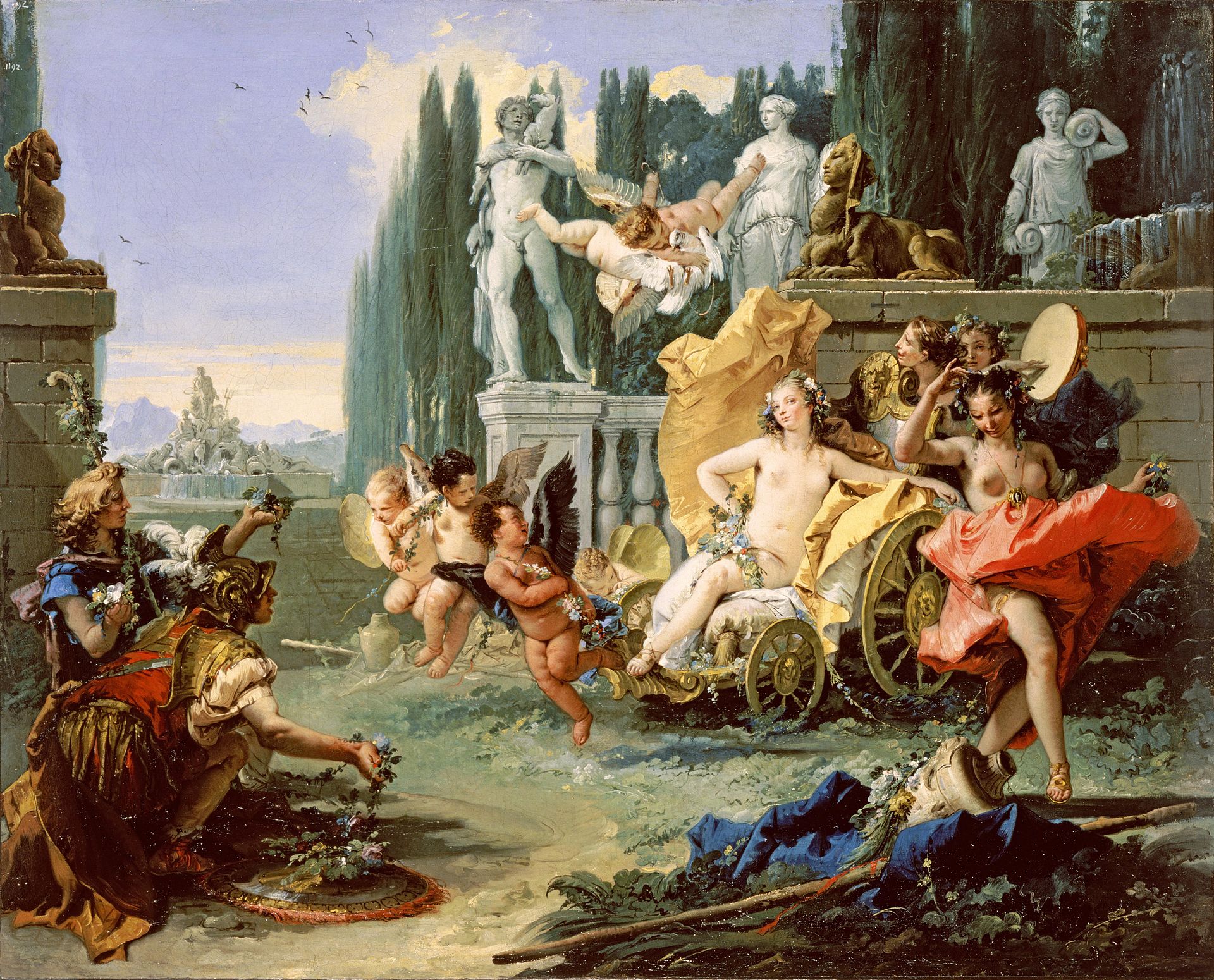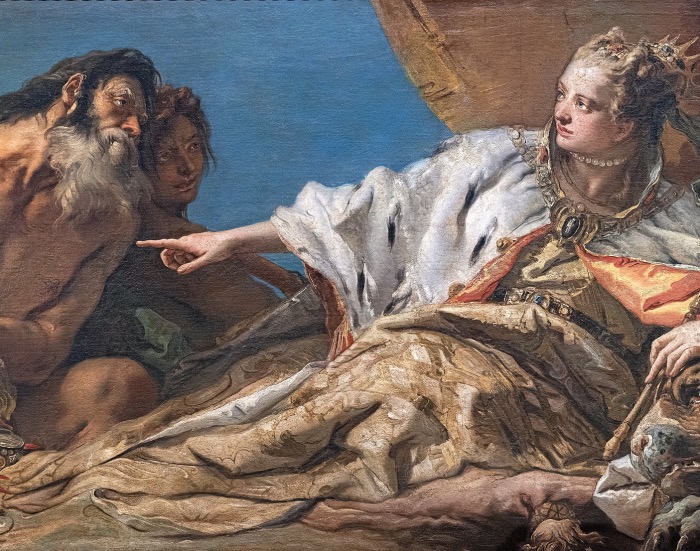Life and works of Giambattista Tiepolo: 5 things to know

LIFE AND WORKS OF GIAMBATTISTA TIEPOLO: 5 THINGS TO KNOW
Giambattista Tiepolo was one of the greatest painters of the 18th century, known for his works of great elegance, refinement and drama. Born in Venice, he worked for most of his career in Italy, but also spent some years in Spain, where he produced some of his most famous works.
Tiepolo’s works were influenced by Italian Baroque and 17th century Venetian painting, but also incorporated elements of French Rococo. In this post we will explore the life and works of Giambattista Tiepolo, analysing his artistic style, techniques and influence on the history of art.
Life and works of Giambattista Tiepolo
Tiepolo’s works are grandiose and theatrical, and many were created together with his sons. Art was in fact also a family affair for him, ever since he was a small artist.
1. FORMATION AND DEBUT OF GIAMBATTISTA TIEPOLO
Giambattista Tiepolo was born in Venice in 1696 into a family of artists. His father was an exponent of 17th century Vedutism and the author of quite successful works; after all, his family had artistic traditions dating back to the 15th century.
Giambattista therefore grew up in a rich cultural environment, showing a precocious talent for painting. He studied first with his father and then in the workshop of Gregorio Lazzarini, who introduced him to theatrical and scenographic works.
The masterpiece of his youth is the cycle of frescoes in the Archbishop’s Palace in Udine, painted between 1726 and 1730. Here, with the help of Girolamo Mengozzi, known as il Colonna, he creates illusory spaces, skies and clouds that blend in with the architecture of the palace. The result is absolutely stunning and reminiscent of the works of Paolo Veronese.
2. THE EUROPEAN SUCCESS OF GIAMBATTISTA TIEPOLO
Tiepolo spent most of his life in Venice, but also worked throughout Europe, producing numerous frescoes and paintings for churches and palaces in Germany, Austria, Spain and Russia. He was particularly active in Germany, where he spent many years working for local princes and bishops.
His most important work in Germany is the fresco cycle of the Würzburg Residence, the pinnacle of German Rococo.
It is a fantastic creation in which the walls seem to expand into infinite spaces and where the characters depicted appear as light figures immersed in a dream.
Fundamental to the completion of this work was the collaboration with his son Giandomenico.
3. THE COLLABORATION BETWEEN GIAMBATTISTA TIEPOLO AND HIS SON GIANDOMENICO
Tiepolo often worked in collaboration with his family, in particular with his sons Giovanni Domenico and Lorenzo. For him, art was always a family affair, ever since he saw his father create his paintings.
Together with his sons, but especially with the help of Giandomenico, he created numerous paintings and frescoes for European churches and palaces.
The collaboration with his sons enabled Tiepolo to create works of great size and complexity, using their technical and artistic skills.

Giambattista Tiepolo – Venezia riceve l’omaggio di Nettuno – 1745-50
4. WORKS BY TIEPOLO
Giambattista Tiepolo created many important works during his career. Here are some of his most significant works:
- Frescoes of the Archbishop’s Palace in Udine: an early masterpiece in which the figures in the scene seem to come to life as if in a show ready to begin.
- Frescoes of the Würzburg Residence: a masterpiece of Rococo in German lands, this cycle of frescoes enchants anyone who observes it because the scene keeps changing as one observes it and changes point of view.
- Neptune offering gifts to Venice: painted in 1758 for the Doge’s Palace in Venice, it is one of the few paintings from the 18th century that extended the decoration of the palace in St. Mark’s Square.
- Portrait of a Young Woman with a Parrot: dated 1760, the work is the masterpiece of a series of portraits made by Tiepolo during that year for the court of St. Petersburg.
- Glory of Spain: this is one of the artist’s last works, commissioned by the Spanish court. He went to Madrid himself, convinced by his sons Giandomenico and Lorenzo to fresco the Throne Room in the new Royal Palace of Charles III.
These are just some of Tiepolo’s most important works, but his artistic output is vast and his works are scattered all over the world.
5. THE GREAT FRESCOES, DRAMA AND MOVEMENT IN THE WORKS OF TIEPOLO
Tiepolo’s painting is a concentration of movement and drama.
His paintings and frescoes depict scenes of great emotional intensity, such as battles and mythological scenes. His figures were always in motion, with dynamic and expressive poses, while his style is influenced by Italian Baroque and 17th century Venetian painting, with some elements of French Rococo.
One of the distinctive features of Tiepolo’s works is their size.
Many of his works are large frescoes that cover entire walls and ceilings of churches and palaces. These works required many hours of work and the creation of numerous sketches and preliminary drafts in which he already included the rich ornamental details that we find in the finished works.
Elaborate tapestries, curtains, festoons and frames are not lacking in his compositions and contribute to emphasise the scenic effect of his works, creating a sense of great elegance and refinement.
Tiepolo died in Madrid in 1770.
Follow me on:
About me
In this blog, I don't explain the history of art — I tell the stories that art itself tells.


